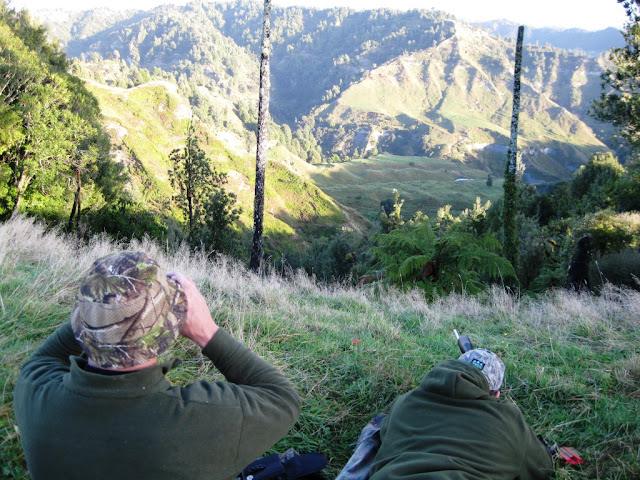Kiwi Nate
Well-Known Member
Question for the guys who hunt in pairs past 1000 yards- do any of you use a spotting scope in the field to track shots and make corrections. Am wondering how the field of view is at long range in variable winds.
Where we shoot in our area of NZ, the terrain is steep and the winds are hard to read. To make a shot past 1000 yards, the bullet will often encounter a left right prevailing wind, a right left catabatic (temperature driven down a valley) wind, a head on down draft or updraft, and rapid changes in air temp causing up to11MOA difference, sometimes more, elevation.
For a long time, I have used my 10 power Leica bino RF's and a camcorder. The camcorder at 20 power optical really fast tracked my learning when I first started serious LR hunting. Now however, as I push my own limits and am finding myself a beginner once again at ranges of 1300-1400 yards in hard to read winds, I would like to be able to read shots better. The good thing about steep country and open bluffs is that shots, especially with VLD bullets, make a small 'explosion' against dirt, easy to read inside 1000 yards but very difficult to see a 3-6 inch impact/dirt/dust cloud out further with my current set up.
What are you guys doing? Do you ever use a spotting scope or do you tend to rely on 20-24 power rifle scopes to track your buddies shots?

Where we shoot in our area of NZ, the terrain is steep and the winds are hard to read. To make a shot past 1000 yards, the bullet will often encounter a left right prevailing wind, a right left catabatic (temperature driven down a valley) wind, a head on down draft or updraft, and rapid changes in air temp causing up to11MOA difference, sometimes more, elevation.
For a long time, I have used my 10 power Leica bino RF's and a camcorder. The camcorder at 20 power optical really fast tracked my learning when I first started serious LR hunting. Now however, as I push my own limits and am finding myself a beginner once again at ranges of 1300-1400 yards in hard to read winds, I would like to be able to read shots better. The good thing about steep country and open bluffs is that shots, especially with VLD bullets, make a small 'explosion' against dirt, easy to read inside 1000 yards but very difficult to see a 3-6 inch impact/dirt/dust cloud out further with my current set up.
What are you guys doing? Do you ever use a spotting scope or do you tend to rely on 20-24 power rifle scopes to track your buddies shots?
Last edited:
